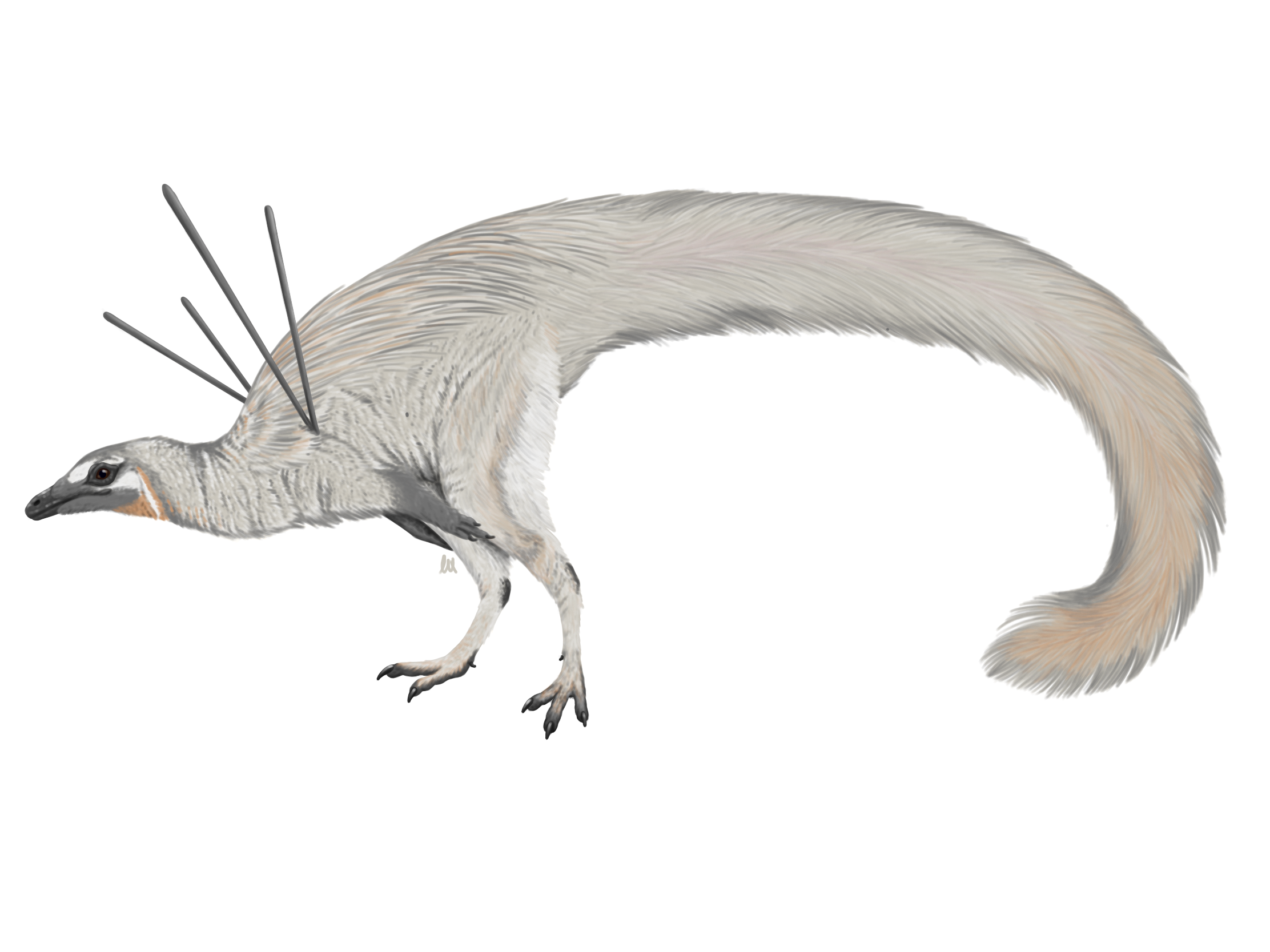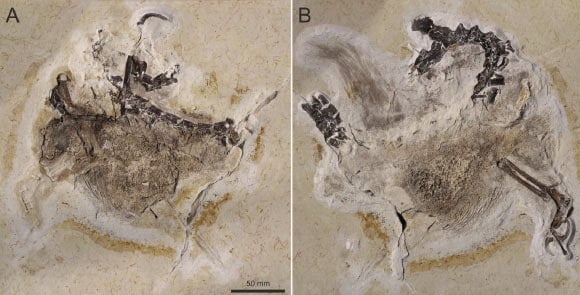Tiny, Feathered Dinosaur Dressed To Impress!
Language
Reading Level
Listen to Article

When paleontologists discover a new dinosaur species, they usually marvel at the ancient creature's size or speed. However, a new species of a chicken-sized dinosaur is making headlines for a feature rarely associated with the primitive reptiles that dominated the world for over 140 million years — dazzling looks!
The exotic, two-legged Cretaceous period animal, which roamed Earth about 110 million years ago, was unearthed in northeastern Brazil's Crato Formation in 1995 and exported to Germany shortly after. The dinosaur lay undisturbed among the collections of the State Museum of Natural History Karlsruhe until recently, when a team co-led by Professor David Martill at the University of Portsmouth in England, decided to take a closer look.
The fossil's location, inside two limestone slabs, helped preserve hidden skeletal elements and soft tissue, allowing the scientists to obtain unprecedented details about the glamorous animal. While the creature's skeleton was similar to that of other small dinosaurs, its exterior was unlike anything discovered before.

The gorgeous dinosaur featured a thick, luxurious mane that most likely could be manipulated to stand on end at will — similar to a peacock's tail. The ancient creature also boasted two tall, ribbon-like structures on either side of its shoulders. The scientists speculate that the 15-centimeter-long rigid filaments made of keratin — the same protein that makes up human hair and nails – were ornamental and used to attract mates or to intimidate enemies. "Given its flamboyance, we can imagine that the dinosaur may have indulged in elaborate dancing to show off its display structures," says Martill.
The researchers believe the fossil was that of a young male dinosaur. "We cannot prove the specimen is a male, but given the disparity between male and female birds, it appears likely the specimen was a male — and young, too, which is surprising given most complex display abilities are reserved for mature adult males," Martill says.

In a nod to its origin and looks, the researchers have named the new species, Ubirajara jubatus. Ubirajara means “lord of the spear” in Brazil's indigenous Tupi language, while Jubatus is Latin for “maned.”
Unfortunately, the beautiful dinosaur's existence, which came to light after the findings were published in the journal Cretaceous Research on December 13, 2020, has sparked an uproar in Brazil. The locals believe the scientifically valuable fossil — the first-known non-avian dinosaur within the Crato Formation — belongs to Brazil and should be returned. However, Eberhard Frey, a paleontologist at the State Museum of Natural History Karlsruhe, says the fossil's export was sanctioned by Brazilian officials and belongs to the German museum. The researcher told National Geographic that he is discussing the situation with colleagues in Brazil and believes they will soon reach an amicable solution.
Resources: Cnet.com, nationalgeographic.com, scientecdaily.com